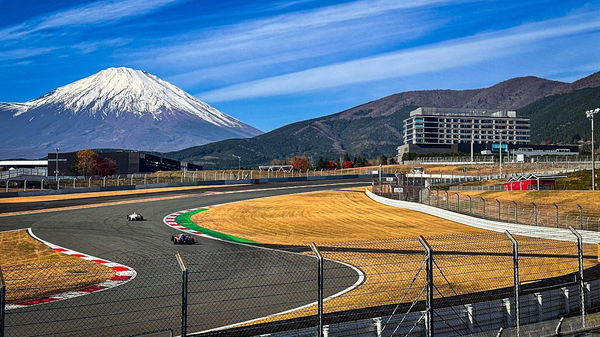

Last season, NASCAR broke new ground with the series’ first points race outside American soil. The inaugural Cup race at the Autodromo Hermanos Rodriguez in Mexico was a big hit. However, once upon a time, the stock car racing series had a different foreign destination in mind. Now, NASCAR is no stranger to competing outside America, though most of those races were often exhibition or non-points races.
Watch What’s Trending Now!
Typically, most of the non-American tracks were concentrated in Canada, with one race in Australia and two in Japan. There have been five races in Canada, mostly in Ontario, and one in Montreal. Meanwhile, NASCAR paid a visit to Calder Park in Australia, as well as Motegi and Suzuka in Japan. However, if circumstances had played differently, Japan could have beaten Mexico to hosting a points-paying NASCAR race.
ADVERTISEMENT
The NASCAR and Fuji History that shaped a rare global racing link
Quite recently, Legacy Motor Club held a NASCAR exhibition event at the Fuji Speedway. Thanks to Toyota, Jimmie Johnson, John Hunter Nemechek and other drivers participated in an exhibition event at the venue. What’s interesting is that the Legacy Motor Club visit to Fuji Speedway is a full-circle moment for NASCAR.
Why, you might ask, is because the race track was originally built and intended to be a NASCAR track. Construction of the track was completed in 1963, but the NASCAR plans fell through because builders ran out of money. Let’s go back to the beginning, where some Japanese fans wanted to bring the oval, superspeedway racing spectacle to their home. The ringleader for this project was Marubeni chairman Naghide Mori, along with future Shadow F1 founder Don Nichols.
ADVERTISEMENT

ADVERTISEMENT
Before the 1964 Daytona 500, Mori inked a deal with NASCAR to establish “Nippon NASCAR”. Over here, the idea was for American cars to run at a 2.5-mile banked oval built in Fuji. The marketing went all out, even roping in Richard Petty to pose with the then Miss Japan in Victory Lane. She later handed him a trophy that read “Japan NASCAR – First Annual International Championship.
Back to the proposed track, Mori and Nichols recruited Daytona International Speedway designer Charles Moneypenny. Originally, it was supposed to be a road course/high-banked superspeedway hybrid, and in 1965, the late Sir Stirling Moss helped with the road course design. Meanwhile, the plan was for the oval construction to be completed by 1966. The problem began when initial estimates suggested that the project would cost $8 million. Unfortunately, they miscalculated, and the company ran out of money after only one high-banked oval turn was finished. Initially, the high-banked NASCAR turn was incorporated into the road course briefly, but was removed in 1974.
ADVERTISEMENT
The stock car racing series is continuing to break barriers
In its 75+ years of existence, NASCAR has always been pushing the boundaries. Whether it is with its cars, or with the rules or the calendar, the innovations are coming in thick and fast. In the past few years, the sport has raced inside an actual stadium, namely the Los Angeles Coliseum, and hosted its first street race in Chicago.
Then this year was the NASCAR Cup race at the Autodromo Hermanos Rodriguez in Mexico. 2026 promises to be even more groundbreaking because a new venue is popping up on the Cup Series calendar. To be precise, the three national series will pay a visit to the Coronado Street Course in San Diego. What makes this track unique is that it is located slap bang in the middle of an active military base. This is pretty much a first for NASCAR, and many fans and drivers are eager to see something truly historical in the making in 2026. Share your thoughts in the comments.
ADVERTISEMENT
ADVERTISEMENT
ADVERTISEMENT

